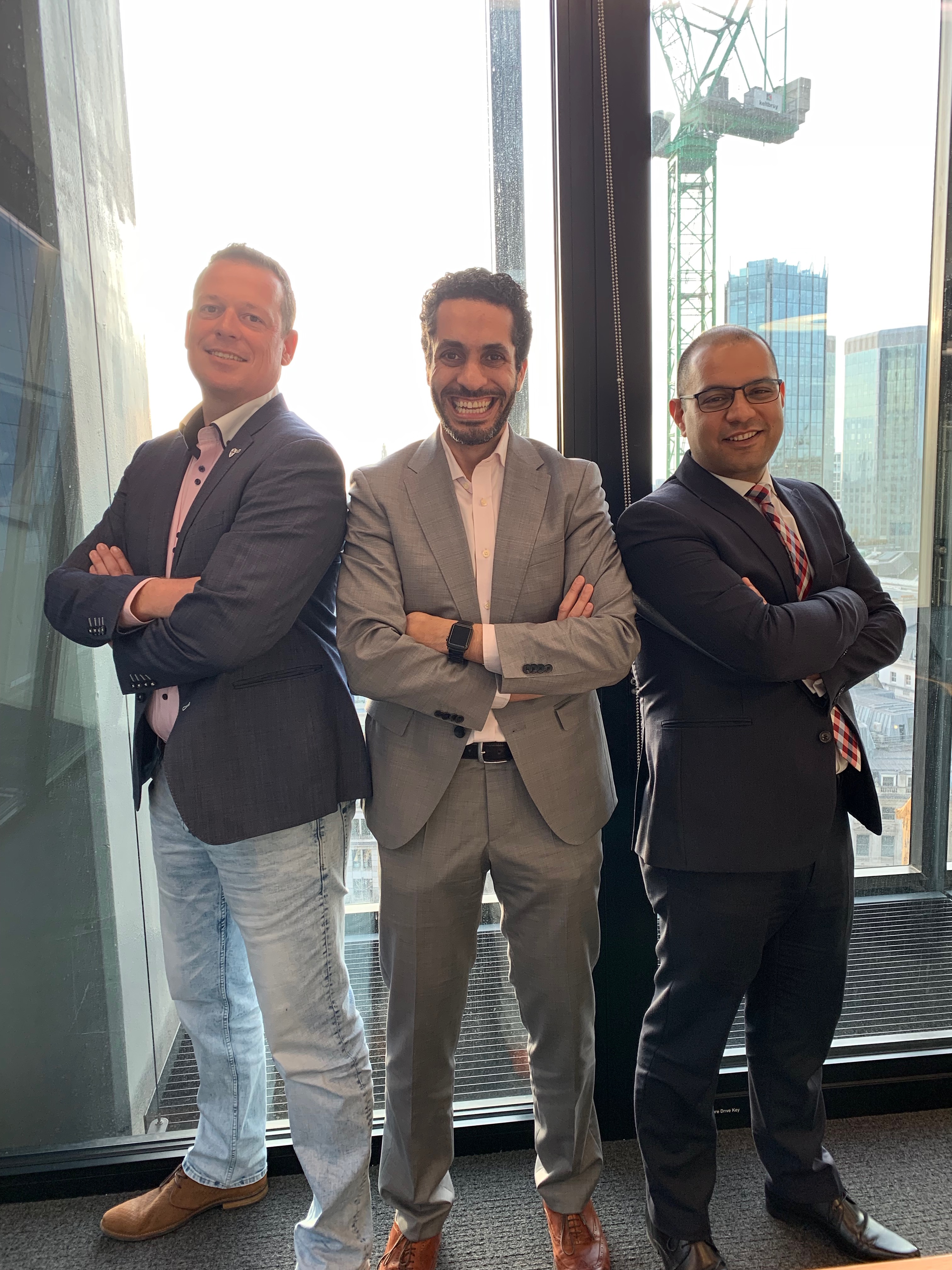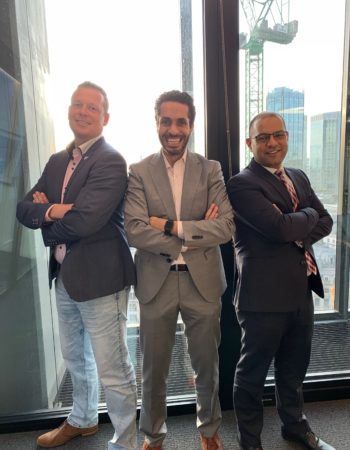
For this week’s episode, we spoke to Kshitij Nangia, Director – COO Strategy at Aon, and Michiel Berende, Inclusive Insurance Lead at Etherisc. Our guests provide us with an introduction to the notion of inclusive insurance along with insights as to how blockchain can help increase insurance penetration in emerging markets such as Sri Lanka.
Etherisc has teamed up with Aon and Oxfam in Sri Lanka to offer small hold farmers weather-based crop insurance.
About our guests
Michiel started out as an underwriter at Interpolis, a Dutch insurance company. He moved on to work closely with the DHAN foundation to explore micro-finance and microinsurance solutions within India. As with most blockchain enthusiasts, he discovered Bitcoin in 2013 and was intrigued by how Bitcoin could facilitate small transaction values at a relatively low cost.
Kshitij has a background in strategy consulting. Prior to joining Aon in 2014, he worked in India and Chile as a strategy consultant in financial services. He is currently part of the COO strategy team at Aon.
About Etherisc and Aon
Etherisc is an InsurTech firm that focusses on blockchain applications within the insurance industry. The firm aims to offer “Insurance as a service” by becoming the Linux for insurance. The first phase of this goal went live recently through the launch of the General Insurance Framework (GIF) – an open-source codebase for Ethereum based insurance applications (dApps), which may be accessed via GitHub here.
Aon is a diversified professional services firm which provides risk, retirement and health consulting. Aon is one of the “Top 3” insurance brokers.
What is blockchain and how does it work?
According to Kshitij, blockchain is digital ledger shared across parties. It has in-built audit trail that provides an immutable record which induces trust between parties. He believes the real power of blockchain can be harnessed when combined with AI and smart contracts.
Michiel adds on that blockchain permits P2P transfer of digital assets without any intermediary. The decentralized network is held together by nodes who process transactions in return for some incentive.
Inclusive insurance
According to Michiel, inclusive insurance (or microinsurance) refers to any insurance product offered to low income clients. Roughly 1.6 billion people do not have access to microinsurance products. He provides some alarming statistics – insurance coverage ratios for some regions are rather low – Latin America stands at 8.5%, Africa at 5.4% and Asia – 6.9%.
Michiel estimates that there are 500 million small hold farmers globally without access to any insurance and index-based agriculture insurance, which is a good fit for blockchain, may be a solution to increase insurance penetration.
Project origins and background
Oxfam has been working on-ground in Sri Lanka with local insurer SANASA Insurance Co providing farmers with crop insurance. In March 2018, Michiel attended a conference where he spoke about agricultural insurance using blockchain and the impact that blockchain can have on the insurance value chain. It was at this conference where Oxfam and Etherisc expressed an interest to jointly explore blockchain for crop insurance.
Later in 2018, Michiel met Hugo Wegbrans, Chief Broking Officer – EMEA at Aon. Following this discussion, Aon expressed an interest in pursuing the concept of a low-cost agricultural insurance product which uses blockchain to distribute insurance risk.
Michiel highlights that the project will begin by covering 3000 farmers. Out of a total of 800,000 small hold farmers in Sri Lanka, roughly 65,000 have access to agricultural insurance. The ultimate goal of this project is to provide every small hold farmer in Sri Lanka with weather-based parametric crop insurance.
Why blockchain?
The argument in favour of using blockchain for providing crop insurance in Sri Lanka is as follows:
- Weather index product
- Michiel highlights that the current crop insurance offerings are paper based. Though blockchain is not required to digitalize it, smart contracts can help streamline manual processes, reduce costs and minimize errors.
- The farmers will be provided with a parametric insurance product. As demonstrated by other parametric insurance products such as Etherisc’s flight delay product and Fizzy by AXA, blockchain and parametric insurance work well together. Part of this reason is the self-executing nature of smart contracts and the objectivity of the chosen index (which can be easily verified when linked to a blockchain).
- Additionally, blockchain serves as an enabler (data transmission and handling layer) for IoT which collects the data and for AI which is used to analyze the collected data.
- Numerous stakeholders
- Crop insurance involves multiple stakeholders including buyers (MNCs, for example), enablers (the local/national/international welfare programmes), distributors and farmers. Blockchain can introduce trust and transparency in the data sharing mechanism between these parties.
- Blockchain can help in last mile distribution; money disbursed for farmers relief may not reach the ultimate beneficiary. To avoid such scenarios, multi-signature wallets may be used (access to funds requires more than one key).
Another problem is the lack of access to accurate weather data – roughly 30 years’ worth of data is required to build actuarial models. The hope is that by leveraging new technology such as blockchain, not only can this data be collected accurately but also cooperation amongst parties can be encouraged.
The partnership
“(We) look at the vision, the people, the solution and the level of understanding of business.”– Kshitij commenting on some evaluation criteria for an incumbent-InsurTech partnership.
The Aon-Etherisc-Oxfam project is an excellent example to add to the growing list of incumbent-InsurTech partnerships. According to Kshitij, Aon views Etherisc as a progressive and innovative InsurTech which understands the challenges that a legacy insurer faces.
Kshitij points out that this partnership, as with most within the insurance industry, stems from executive buy-in; Hugo and Tobias Noack together were a driving force behind Aon’s involvement. Aon’s projects focus on at least one of the 3C’s – client, community and colleagues; for this partnership, the focus is on communities (who have a lack of insurance coverage).
Advice from Kshitij and Michiel
Kshitij suggests that insurance incumbents must keep an open mind regarding innovation and emerging technologies such as blockchain. Whereas, for InsurTech firms, he urges them to understand the current business model of incumbents and the challenges faced by incumbents.
Michiel warns InsurTech start-ups that they must be prepared for rejection and must keep on going. He also recommends insurance incumbents to examine the General Insurance Framework code-base for an introduction to blockchain and insurance applications on blockchain.
The road ahead
In addition to completion of the initial stage of the crop insurance project in Sri Lanka, Etherisc will be working towards Beacon project (an R&D initiative funded by the EU) which forms part of the Horizon 2020 programme. This project aims to combine earth observation data with meteorological data. Etherisc will be leveraging its existing blockchain capabilities during this 3-year project together with a large consortium which includes Aon.
Your Turn
Many thanks to Kshitij and Michiel for providing an insight into inclusive insurance and the role blockchain can play in providing insurance products to the last mile customers. If you liked this episode, please do review it on iTunes. If you have any comments or suggestions on how we could improve, please don’t hesitate to add a comment below. If you’d like to ask Kshitij or Michiel a question, feel free to add a comment below and we’ll get him over to our site to answer your questions.







